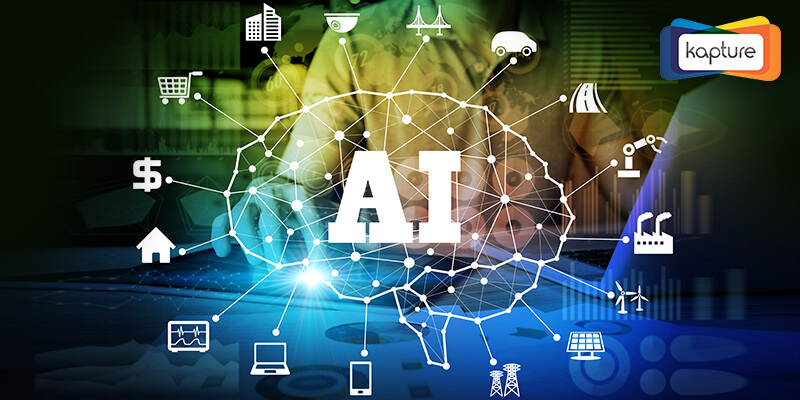
Isn’t the word AI become a cliché? From small enterprises to large scale businesses, the buzz word is AI. So, do you think you can escape the clutches of AI? I don’t think so.
AI has penetrated so much into the market that there is no turning back. I would predict with great accuracy that we are all headed for a period in the evolutionary timeline that would define us as transhuman.
The human flesh gets merged with technology for processing information at a much faster rate!
The biggest question facing humanity is that
Should we go in that direction even if we are capable of producing machines capable of processing information zillion times better than humans?
Claude Shannon, the American mathematician and electrical engineer says
“I visualize a time when we will be to robots what dogs are to humans, and I’m rooting for the machines.”
Enough of the scare tactics!
Let’s dwell more into how AI can be used for the benefit of society and to improve business operations.
Haven’t you all had the experience of using CAPTCHA during times when you were in dire need of information online or when you were extremely busy?
My coffee once went cold while selecting all images with the store front and also because of clicking on multiple “I’m not a robot” re CAPTCHA.
I’m still a mortal! You Google!
Well, the machines can’t distinguish between work done by humans or robots. Bringing personalization and adding emotions to AI would be the biggest challenge.
Predictive analysis is a type of data mining that makes use of deep machine learning and other statistical modeling techniques to predict the future based on structured or historical data.
Three of the most widely used predictive modeling techniques are decision tree, regression and neural networks. Decision trees are segregation models that partition data into various subsets based on categories of input data. Regression models evaluate relationships among variables and neural networks are advanced techniques for modeling extremely complex relationships.
Few other popular techniques used for predictive analysis are Bayesian analysis, ensemble models, time series data mining and gradient boosting.
The three main areas of predictive analysis are customer analytics, operational analytics and threat and fraud analytics.
Customer analytics helps acquire, grow and retain customers by better understanding them, operational analytics plan, manage and maximize business operations while threat and fraud analytics help monitor, detect and control fraud.
Every time we type a search query into Google, Facebook or Amazon, we are feeding data into the machine which are growing ever more intelligent. Big data analytics is the future of business intelligence because it creates a path from insights to value.
Open any job portal; you would see ton of jobs associated with big data analysis.
Banks have been using big data powered by AI to approve or decline credit cards and personal loans. Retailers have also been predicting stock demands so they can record the exact amount of stock needed for each product. Predictive analysis is also used for weather forecasting.

Organizations implementing predictive analysis should be conscious of the questions they are trying to solve and the metrics which they want to predict. This helps in forecasting future behaviors. The predictive analysis tools such as sales CRM are very powerful depending on the data we feed.
Data should be excluded from selection and exclusion bias. Data can be collected from CRM tools, Google analytics, Microsoft azure or IBM Watson. There are plenty of tools in the market to collect data.
Predictive analysis helps in customer segmentation, risk assessment and churn prevention.
However, its main use is to predict customers purchase behavior through product recommendations. Every time you visit an E-commerce website and purchase a product, the AI flushes you with loads of similar products that other customers have purchased. This useful feature can be accessed through implementation of CRM tools.
Few companies like IBM have been using predictive analysis to reduce employee attrition. By feeding organized data such as work experience, qualifications and other parameters into the machine, the AI is able to predict the probability of an employee leaving the organization.
Predictive analysis is also used for forecasting and optimizing marketing campaigns and for improving business operations. Measuring life time value of customers to improve profitability and macroeconomic analysis to prevent untoward effect on operations also falls under the domain of predictive analytics.
It’s imperative for businesses to be good decision makers and identify the right channels of communication with customers through proper insights for getting the right business prospects.
Consider this fantastic example of direct marketing and predictive marketing
Promotional emails without predictive analysis can be sent to 20000 people at a cost of $3 per mail to sell a product costing $500. The response rate would be low and hence only 1000 people would purchase the product.
Through predictive analysis, great profit can be generated by predicting the number of customers that are most likely to buy your product or service.
Therefore, by implementing predictive analysis, promotional emails can only be sent to 9000 people who are most likely to buy the product. So, the response rate would be high and around 7500 people would buy the product worth $500 instead of just the 1000 people previously.
Sales CRM could be implemented for your business to increase the amount of data collection, to monitor consumer trends and to automate cross selling information in confirmation emails.
So basically, predictive analysis can be used for multiple industries such as banking, financial services, retail, oil, gas and utilities, government and public sectors and also for the healthcare industry.
Well, any subject involving AI, Elon Musk is at the forefront. So, I would like to conclude with one of his quote.
“Hope we’re not just the biological boot loader for digital super intelligence. Unfortunately, that is increasingly probable.”
This was from one of his tweets. With movies like “her”, where Samantha’s deep machine learning emotionally connected with Theodore Twombly, we are most likely to see AI being used to replace the repetitive monkey tasks, so humans can focus more on improving other important areas of business operations.
Sales & Marketing Head at Kapture, David likes to connect with like-minded professionals. In his free time, he likes to read and write informative blogs and articles which can help other gain more information.